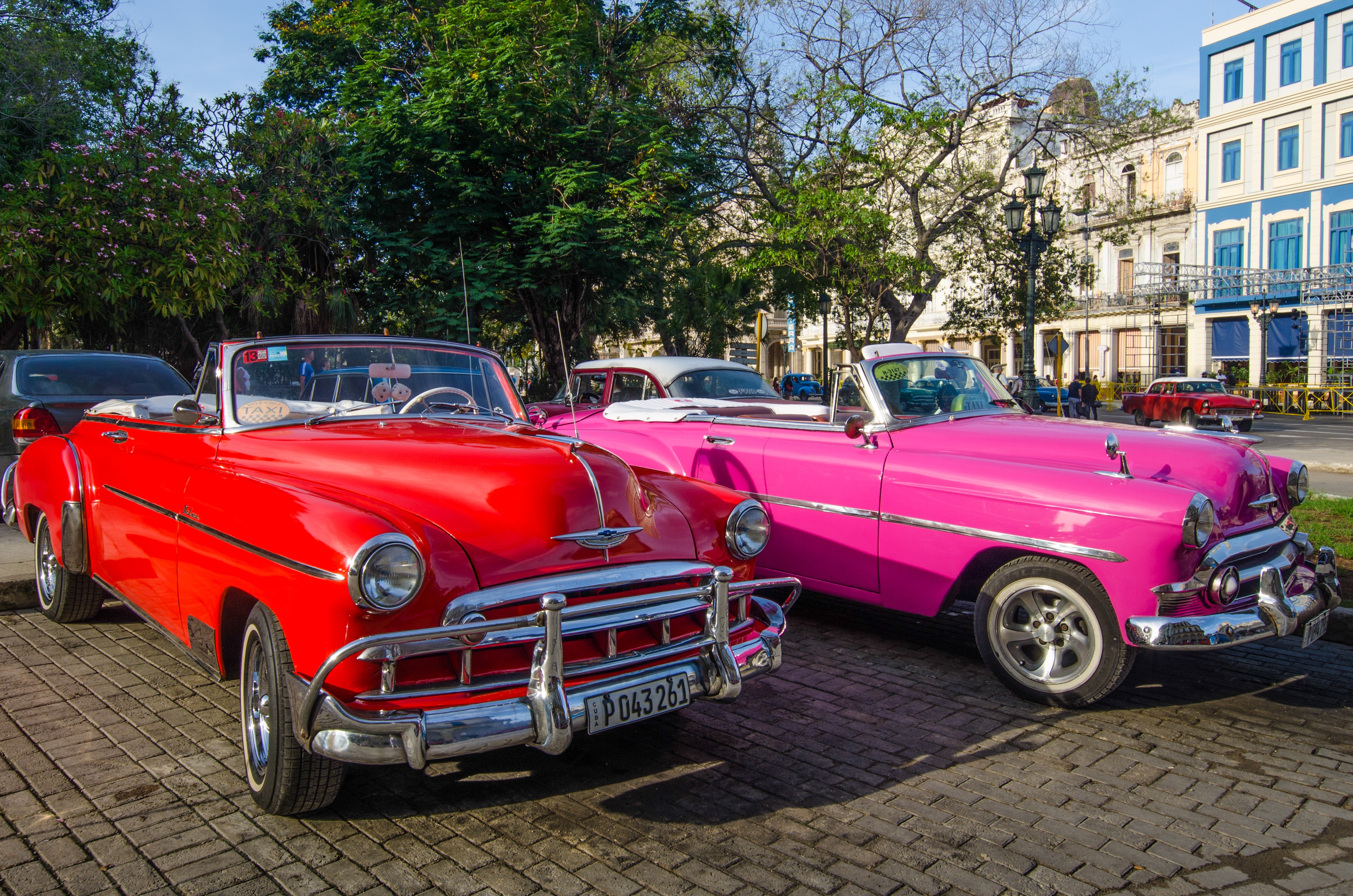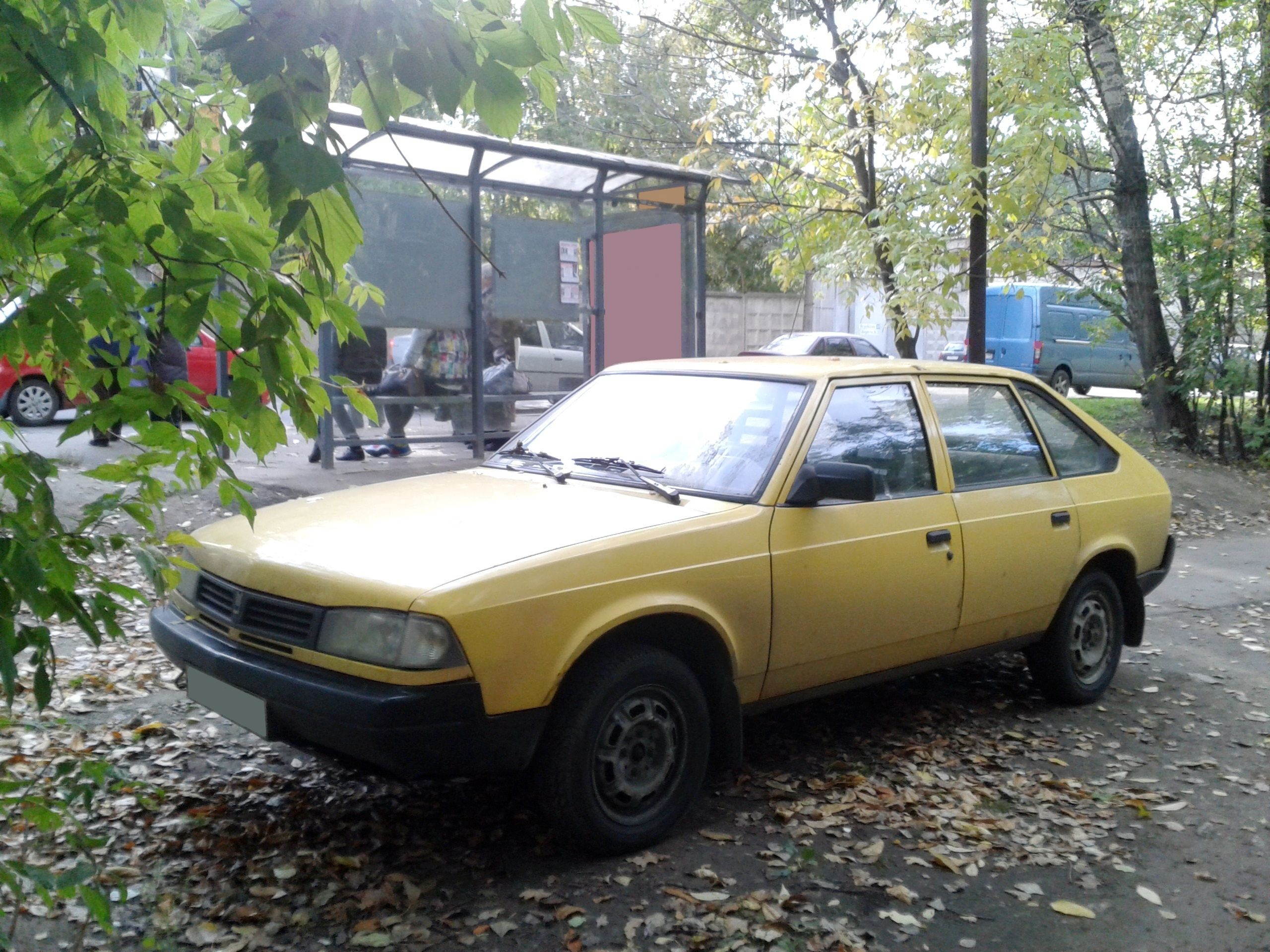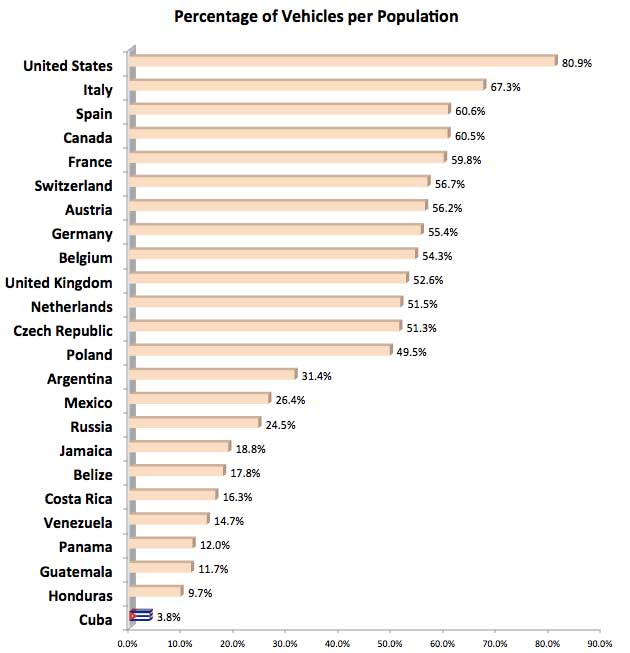Can U.S. Automakers Crack the Cuban Market?
Chevys from the early 1950s, in Cuba.
Most of us have become familiar with the sun-drenched scenes of Cuba’s classic automotive transportation. The easing of relations with the United States could at long last herald changes in the fleet of cars on Cuban roads. Here is a little backstory on that history to propel us forward.
Fidel Castro and his revolution came to power on January 1, 1959. After several unsuccessful attempts, Castro ousted the dictator Fulgencio Batista and his supporters who fled Cuba to the Dominican Republic.
Shortly thereafter, as Castro began to ally with the Soviet Union, the United States imposed a trade embargo which is only now, 50-plus years on, under reconsideration. If Cuba is not the birthplace of the saying “Necessity is the mother of invention,” it has proven the adage daily since the embargo began.
Prior to September 2011, only automobiles that were in Cuba before the 1959 revolution could be freely bought and sold. For decades, the sale of a car by a State dealer to a Cuban citizen required approval by a governmental agency. Foreigners also needed authorization signed by “the agency that serves them” in Cuba.
The Cuban people have been living in a “Happy Days”-era auto time warp. In a land where planned obsolescence is an unknown commodity, almost every make and model of vintage American iron is on display. Far beyond basic transportation, these cars were, and are, an expression of creativity, individualism and dogged determination, a slap at the sterility and oppressiveness of the regime.
What about other cars, you ask? What alternatives to pre-1960 U.S. cars have been available?
The Communist system is known for their ability to produce “interesting” vehicles and Cuba certainly wouldn’t be complete without their poor to wincingly bad state-sanctioned cars. Mercifully it’s a short list of the Russian Moskvitch 2141, GAZ 2410 and VAZ 2105, along with several others including the Polksi Fiat 126p and the French Peugeot 405. The Peugeot is apparently quite common and very popular. I owned the 16-valve version of this car in the late 80’s, and can attest to its peppy performance and styling.
Russian Moskvitch 2141
Jay Ramey is an Associate Editor with Autoweek, and he suggests that “Cuba’s streets may be famous for American classics from the 1950’s, but there’s more to it once you dig a little deeper.
In January, the Cuban government began selling new and used vehicles to anyone with the money to buy one. But even under those recent reforms, a 2013 Peugeot sedan was priced at more than $250,000, and a 2010 Volkswagen Passat cost $70,000, according to a report earlier this year by National Public Radio.
Karl Brauer, senior analyst for Kelley Blue Book, noted that “the country is still ruled by a communist regime, and access doesn’t mean economic capability.”
Cuba’s citizens are eager to buy new or newer American products, as much as U.S. automakers would certainly like to satisfy their transportation needs. But the reality is there is still a significant transition from a state to a market economy that has to occur. In a country where automobile ownership for decades has been, and continues to be, a luxury afforded by a very few, it seems that time, patience and a little luck will play a significant role.
Source: WorldBank.org, 2008.
Click here to sign up for the Daily Economy weekly digest!











